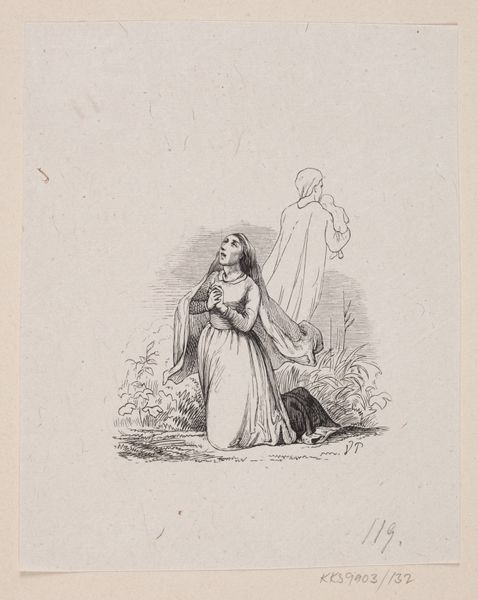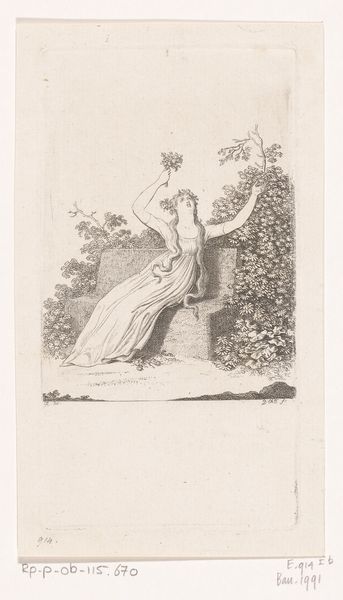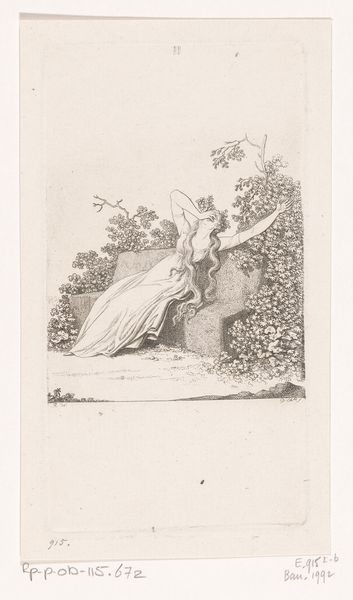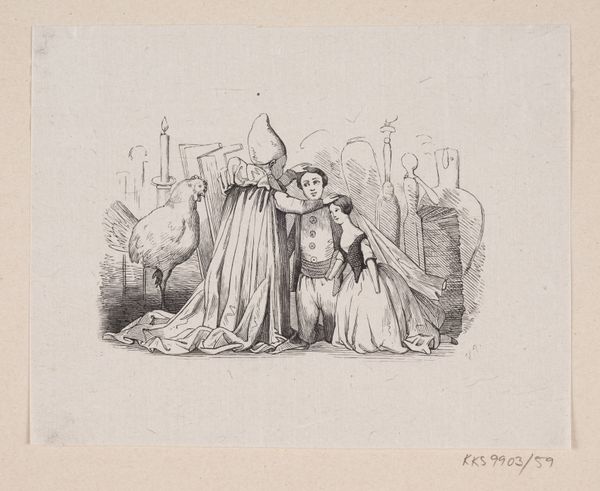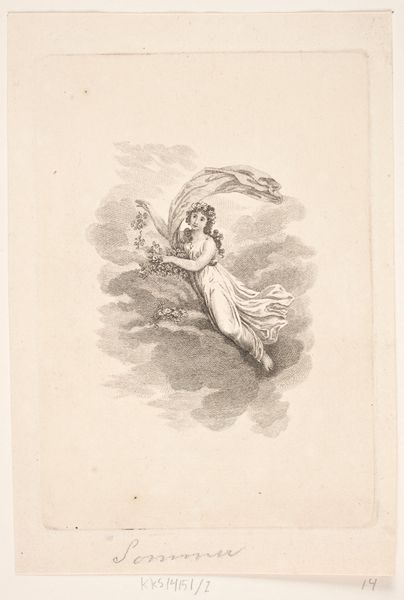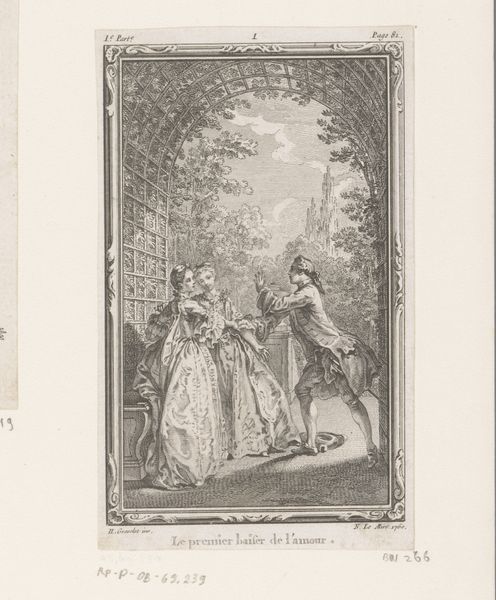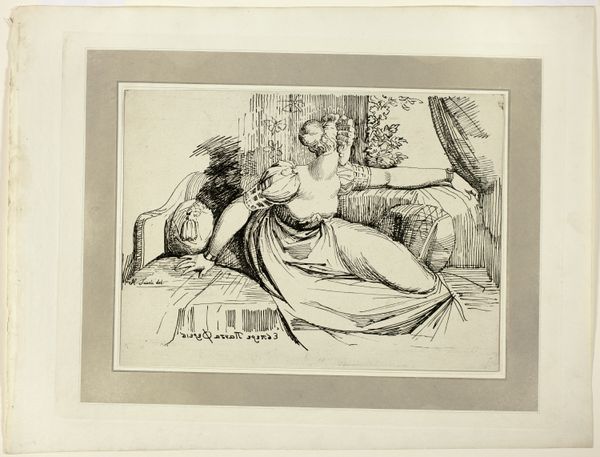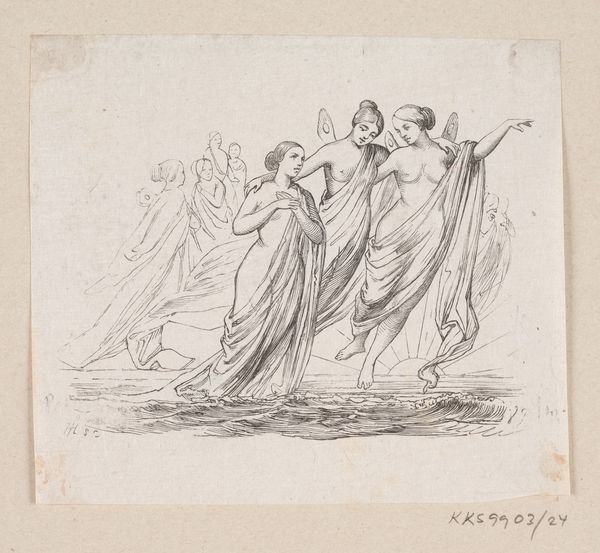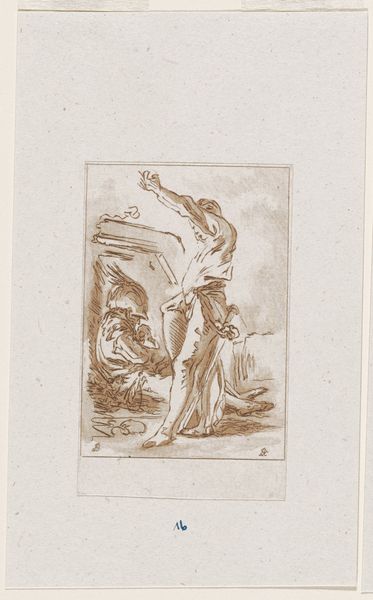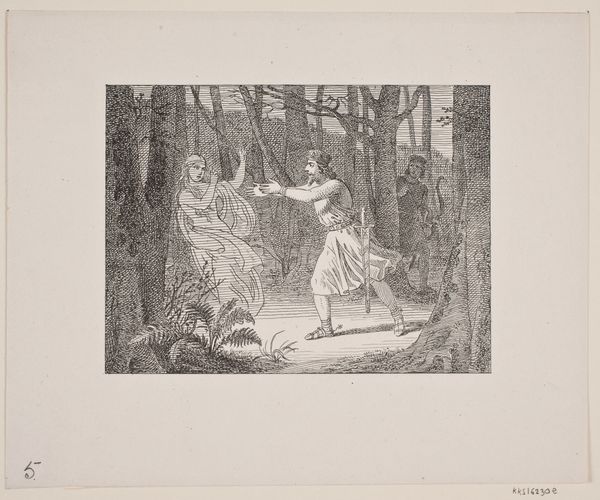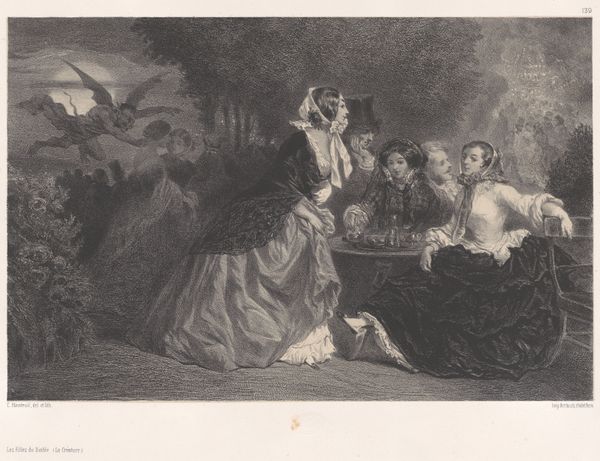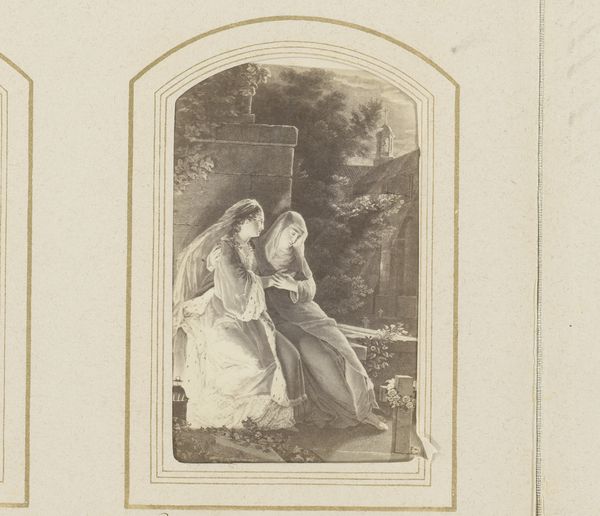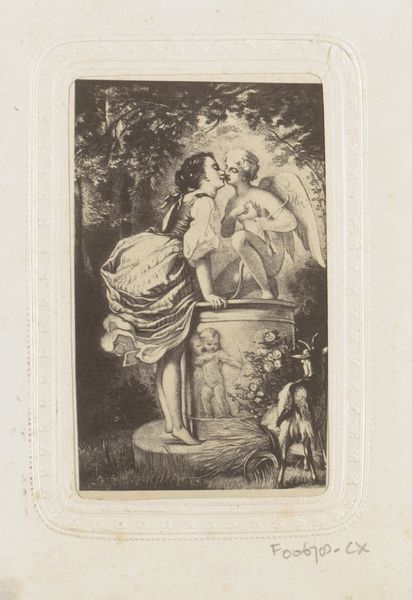
Illustration til "De røde Skoe" i H.C. Andersen, "Eventyr og Historier", Bind 2 1870 - 1873
0:00
0:00
Dimensions: 100 mm (height) x 142 mm (width) (bladmaal)
Curator: Looking at this print, made with engraving techniques by H.P. Hansen, we see an illustration for Hans Christian Andersen's "The Red Shoes," completed sometime between 1870 and 1873. What strikes you first about it? Editor: There's a rawness to the line work and the tonal range achievable in an engraving, from velvety shadows to sharp white, feels limited, creating an almost stark emotional landscape. You feel her panic viscerally. Curator: Yes, it’s the Romanticism seeping through—a stark scene with potent symbolism. An angel confronts a girl seemingly fleeing a graveyard, the red shoes the key to her damnation… Do you read it similarly? Editor: I'm curious about the physical labor that went into this specific image. Engraving is painstaking, the artist using specialized tools to carve into a metal plate. How did those repetitive motions, that time investment, affect the image and how Hansen approached the task? Did it bring its own constraint on representation? Curator: Well, the continuous presence of the story surely influenced Hansen's choices. "The Red Shoes" is about vanity and consequence; that angel is an almost allegorical figure, representing divine judgement—the ever-present moral weight. The wings rendered, each line, are a powerful demonstration of that. Editor: But let's think of that angel’s robes and wings rendered with so much detail—and the simple cotton clothes worn by the fleeing girl. Was Hansen working with different quality tools for this project based on the need for intricate detail? Where was this print made? These material aspects have cultural meaning in themselves and impact my response. Curator: True. Perhaps Hansen made a study in pencil before proceeding with the final engraving, allowing him to play with composition. That grave setting suggests a universal moral—the inevitable endpoint of choices, good or bad. Editor: I find the limitations of engraving so compelling here. Hansen coaxes so much depth out of this limited process and tool. It highlights how creative limits and labor, instead of holding back an artwork, often shapes it in unseen and critical ways. Curator: That blending of labor and vision is the crux of what makes Hansen’s illustration powerful—not merely illustrating, but also translating deeper moral questions. It remains visually potent over a century later. Editor: A process imbued with meaning and physical endeavor. The artwork serves as both window into a cultural context and as testament to material effort of engraving, providing us ways to consider our relationship with craft and production even today.
Comments
No comments
Be the first to comment and join the conversation on the ultimate creative platform.
